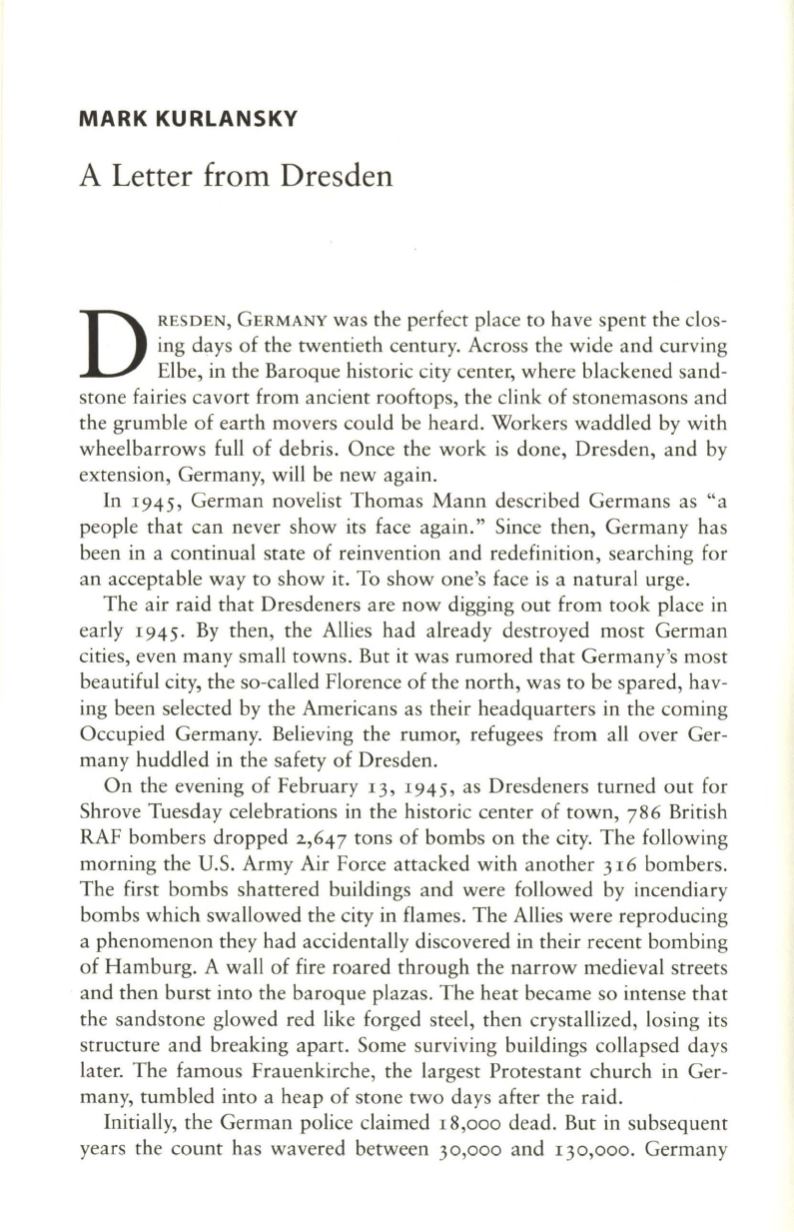
MARK KURLANSKY
A
Letter from Dresden
D
RESDEN, GERMANY was the perfect place to have spent the clos–
ing days of the twentieth century. Across the wide and curving
Elbe, in the Baroque historic city center, where blackened sand–
stone fairies cavort from ancient rooftops, the clink of stonemasons and
the grumble of earth movers could be heard. Workers waddled by with
wheelbarrows full of debris. Once the work is done, Dresden, and by
extension, Germany, will be new again.
In
I945,
German novelist Thomas Mann described Germans as "a
people that can never show its face again." Since then, Germany has
been in a continual state of reinvention and redefinition, searching for
an acceptable way to show it. To show one's face is a natural urge.
The air raid that Dresdeners are now digging out from took place in
early
I945.
By then, the Allies had already destroyed most German
cities, even many small towns. But it was rumored that Germany's most
beautiful city, the so-called Florence of the north, was to be spared, hav–
ing been selected by the Americans as their headquarters in the coming
Occupied Germany. Believing the rumor, refugees from all over Ger–
many huddled in the safety of Dresden.
On the evening of February
13, I945,
as Dresdeners turned out for
Shrove Tuesday celebrations in the historic center of town,
786
British
RAF bombers dropped
2,647
tons of bombs on the city. The following
morning the U.S. Army Air Force attacked with another 316 bombers.
The first bombs shattered buildings and were followed by incendiary
bombs which swallowed the city in flames. The Allies were reproducing
a phenomenon they had accidentally discovered in their recent bombing
of Hamburg. A wall of fire roared through the narrow medieval streets
and then burst into the baroque plazas . The heat became so intense that
the sandstone glowed red like forged steel, then crystallized, losing its
structure and breaking apart. Some surviving buildings collapsed days
later. The famous Frauenkirche, the largest Protestant church in Ger–
many, tumbled into a heap of stone two days after the raid.
Initially, the German police claimed
I8,000
dead . But in subsequent
years the count has wavered between
30,000
and
130,000.
Germany


